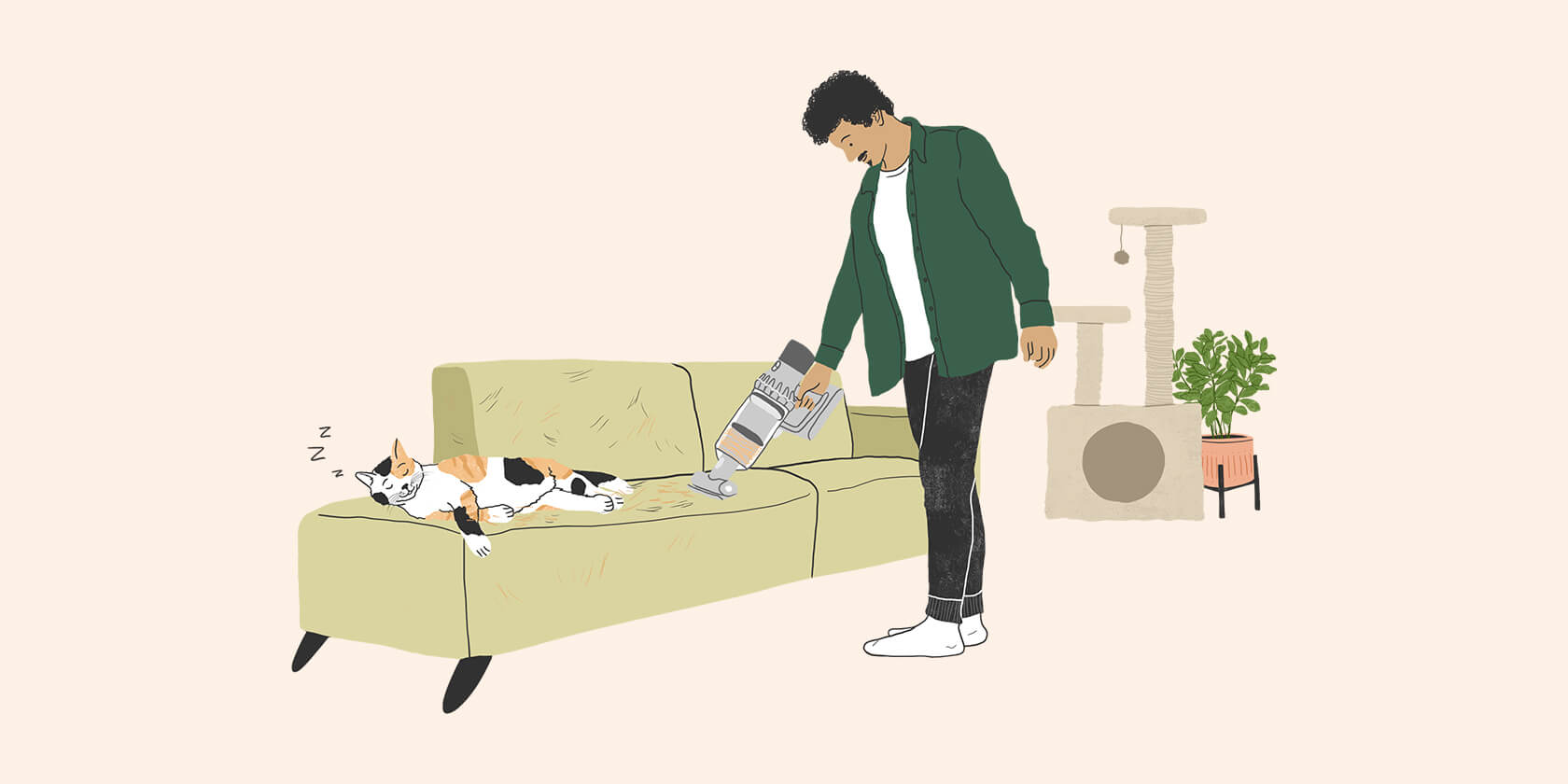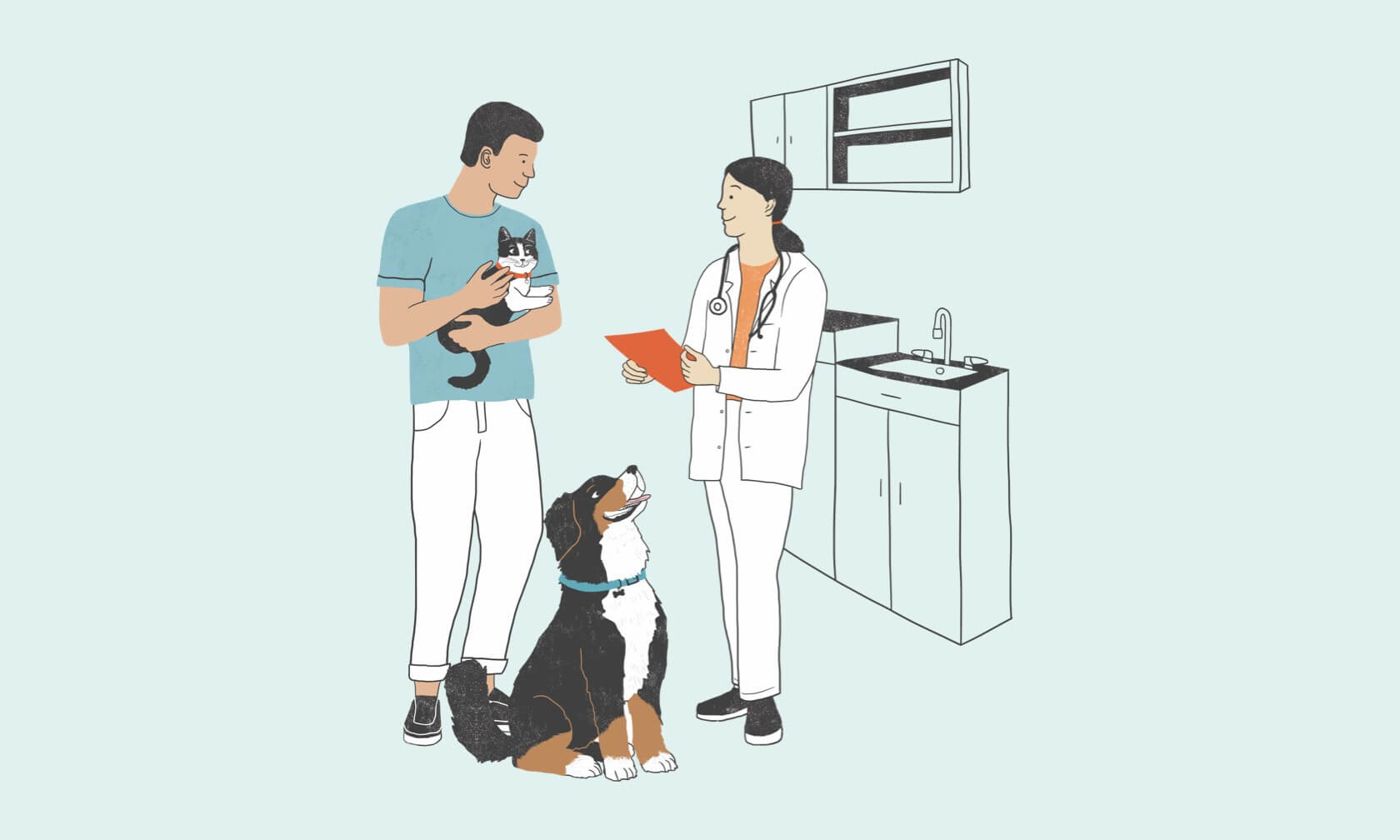No matter how much you sweep, vacuum, and dust, it seems that cat hair never goes away. The good news is that shedding is a normal characteristic of cats. Excessive shedding, or an increase in shedding, can help clue you in to potential medical problems, so it’s important to know what to keep an eye out for.
Cat Fur or Cat Hair? What’s What?
The terms “fur” and “hair” are often used interchangeably. But generally speaking, “fur” refers to densely packed hair and “hair” refers to the individual strands that make up the fur. The entire coat of hair on a cat is considered their “fur coat” or “hair coat.” If you’re confused, don’t worry — your veterinarian will know what you’re talking about whether you use “fur” or “hair” to refer to your cat’s coat!
Most cats actually have multiple layers of hair that make up their coat; certain breeds can have more or fewer layers as well as differences in hair length, coarseness, and straightness. The different hair layers serve specific functions: protection, insulation, waterproofing. Cats’ whiskers (the technical term is vibrissae) are actually a very special kind of hair that act as touch sensors. Whiskers are found on the cheeks, chin, and above the eyes but also on the back of the front legs. Cats use whiskers to sense their environment as they move about so whiskers should never be trimmed like normal hair.

Why Do Cats Shed?
The purpose of shedding is to remove dead hair and release natural oils in the skin. Dead hair that isn’t removed by grooming or brushing will be removed by shedding. If it’s not, skin irritation can result.
Each year cats will have one or two cycles of heavy hair loss and growth. These usually occur in the spring and fall. The spring shed helps your cat lose their heavier winter coat. In the fall, they are preparing for the growth of next winter’s coat. However, this cycle can be altered depending on the amount of time your cat spends inside versus outside. Indoor cats are exposed to air conditioning in the summer and heaters in the winter, as well as artificial lighting. This can cause some confusion to their system which can result in relatively constant shedding.
Another thing that impacts your cat’s shedding is whether they’re a long or short-haired breed. Typically, long-haired cats, such as Maine Coons, Persians, or Ragdolls, shed more than short-haired cats.
There are some other common causes of shedding that are important to be aware of.
- Food quality. Cats who are not being feed a balanced diet can experience additional shedding. High-quality, nutritionally complete food is essential for healthy skin and coat.
- Stress. Cats tend to shed more during times of stress or if they’re scared or nervous.
- Age. As cats get older, they tend to groom themselves less often. This can lead to either more shedding or their fur getting matted.
- Pregnancy/lactation. Pregnant and lactating cats will shed more due to hormonal changes.
Is It Normal Shedding or A Medical Problem?
If you notice bare patches or irritation/redness on your cat’s skin, it’s time to make an appointment with your veterinarian. Based on the history you provide and a physical examination, they can determine the underlying cause of the shedding. The pattern and distribution of hair loss will be evaluated, and they’ll also determine if the hair is being shed or broken off. The skin will be examined for infection or signs of parasites. Additionally, they may need to perform certain lab tests, such as skin scrapes, hair examination, blood work, and urinalysis.
Here are some of the potential health issues that may affect your cat’s shedding.
- Parasites. Mites and fleas (especially if your cat is allergic to them) can cause chewing and scratching, creating more hair loss. Even if you cannot see these pests crawling around on your cat, if they are present they can cause a problem.
- Allergies. Allergies to food, the environment, certain products, and even biting insects can cause skin issues and loss of hair.
- Skin infections. Either bacterial or fungal infections can impact your cat’s coat.
- Behavioral disorders. Stress and anxiety can prompt excessive licking and chewing, leading to self-induced fur loss.
If your veterinarian determines that shedding is due to a medical issue, they will provide you with a treatment plan to address the underlying issue. Following their recommendations closely is important. Once the underlying medical issue is under control, your cat’s shedding should return to its normal level.
Ways to Help Ease the Stress and Mess of Shedding
Whether your cat’s shedding is normal or caused by medical issues, there are things you can do to try and keep it under control. Of course, it’s important to make sure you aren’t doing anything at home that conflicts with your veterinarian’s advice for medical causes.
- Feed a nutritionally complete, veterinary-recommended diet.
- Use veterinary-recommended parasite protection year-round, even if your cat is indoor only (think how many bugs still find their way into your home).
- Be sure to keep your cat hydrated — for some cats, water fountains can encourage them to drink more.
- Take steps to lessen stress in your cat’s environment. Be sure they have a place to retreat and feel secure. Find ways to keep their minds busy with food puzzles and other enrichment.
- Regularly groom your cat using a veterinary-approved brush or comb. Making treats a part of the process can keep your cat happy and tolerant.
- For cats that need some extra help with their fur, groomers as well as some veterinary practices can give them a trim. This can be especially helpful for older cats that cannot groom themselves, as well as long-haired cats.
- Consult with a veterinary behaviorist if your cat has stress issues causing excessive grooming.
- Sweep and vacuum daily, and regularly wash your cat’s bedding.
ZPC-01296R1



